Advanced Technologies Conciliating Desulfurization and Denitrogenation to Prepare Clean Fuels
Abstract
1. Introduction
2. Extractive Process
2.1. Ionic Liquids
2.2. Deep Eutectic Solvents
2.3. Other Solvents
3. Adsorptive Process
3.1. Carbon-Based Materials
3.2. Zeolites
3.3. Mesoporous Silica
3.4. Metal–Organic Frameworks
4. Catalytic Oxidation Process
Photocatalytic Process
5. Ultrasound-Assisted Process
6. Overview and Perspectives
Supplementary Materials
Author Contributions
Funding
Data Availability Statement
Acknowledgments
Conflicts of Interest
Abbreviations
References
- Holechek, J.L.; Geli, H.M.E.; Sawalhah, M.N.; Valdez, R. A Global Assessment: Can Renewable Energy Replace Fossil Fuels by 2050? Sustainability 2022, 14, 4792. [Google Scholar] [CrossRef]
- Council, E.-A.B. Energy Transition in ASEAN 2023. 2023. Available online: https://www.eu-asean.eu/wp-content/uploads/2023/04/Energy-Transition-in-ASEAN-2023_5-April-2023.pdf (accessed on 4 April 2023).
- Shindell, D.; Smith, C.J. Climate and air-quality benefits of a realistic phase-out of fossil fuels. Nature 2019, 573, 408–411. [Google Scholar] [CrossRef] [PubMed]
- Hegazi, A.H.; El-Gayar, M.S. Role of non-hydrocarbon constituents in crude oils correlation and heavy fractions processing studies. Pet. Chem. 2017, 57, 838–842. [Google Scholar] [CrossRef]
- Doney, S.C.; Mahowald, N.; Lima, I.; Feely, R.A.; Mackenzie, F.T.; Lamarque, J.F.; Rasch, P.J. Impact of anthropogenic atmospheric nitrogen and sulfur deposition on ocean acidification and the inorganic carbon system. Proc. Natl. Acad. Sci. USA 2007, 104, 14580–14585. [Google Scholar] [CrossRef] [PubMed]
- Sun, Y.X.; Zwolinska, E.; Chmielewski, A.G. Abatement technologies for high concentrations of NOx and SO2 removal from exhaust gases: A review. Crit. Rev. Environ. Sci. Technol. 2016, 46, 119–142. [Google Scholar] [CrossRef]
- Syri, S.; Fronzek, S.; Karvosenoja, N.; Forsius, M. Sulphur and nitrogen oxides emissions in Europe and deposition in Finland during the 21st century. Boreal Environ. Res. 2004, 9, 185–198. [Google Scholar]
- Babich, I.V.; Moulijn, J.A. Science and technology of novel processes for deep desulfurization of oil refinery streams: A review. Fuel 2003, 82, 607–631. [Google Scholar] [CrossRef]
- Bello, S.S.; Wang, C.; Zhang, M.J.; Gao, H.; Han, Z.N.; Shi, L.; Su, F.B.; Xu, G.W. A Review on the Reaction Mechanism of Hydrodesulfurization and Hydrodenitrogenation in Heavy Oil Upgrading. Energy Fuels 2021, 35, 10998–11016. [Google Scholar] [CrossRef]
- Drahoradova, A.; Vit, Z.; Zdrazil, M. Carbon Supported Ni-Mo Catalyst—High Hydrodenitrogenation Activity and Low Inhibition of Hydrodesulfurization by Hydrodenitrogenation. Fuel 1992, 71, 455–458. [Google Scholar] [CrossRef]
- Miranda, A.M.; Ocampo, D.; Vargas, G.J.; Ríos, L.A.; Sáez, A.A. Nitrogen content reduction on scenedesmus obliquus biomass used to produce biocrude by hydrothermal liquefaction. Fuel 2021, 305, 121592. [Google Scholar] [CrossRef]
- Ghadiryanfar, M.; Rosentrater, K.A.; Keyhani, A.; Omid, M. A review of macroalgae production, with potential applications in biofuels and bioenergy. Renew. Sustain. Energy Rev. 2016, 54, 473–481. [Google Scholar] [CrossRef]
- Abro, R.; Kiran, N.; Ahmed, S.; Muhammad, A.; Jatoi, A.S.; Mazari, S.A.; Salma, U.; Plechkova, N.V. Extractive desulfurization of fuel oils using deep eutectic solvents—A comprehensive review. J. Environ. Chem. Eng. 2022, 10, 107369. [Google Scholar] [CrossRef]
- Haruna, A.; Merican, Z.M.A.; Musa, S.G. Recent advances in catalytic oxidative desulfurization of fuel oil—A review. J. Ind. Eng. Chem. 2022, 112, 20–36. [Google Scholar] [CrossRef]
- Hosseini, A.; Khoshsima, A.; Sabzi, M.; Rostam, A. Toward Application of Ionic Liquids to Desulfurization of Fuels: A Review. Energy Fuels 2022, 36, 4119–4152. [Google Scholar] [CrossRef]
- Majid, M.F.; Zaid, H.F.M.; Kait, C.F.; Jumbri, K.; Yuan, L.C.; Rajasuriyan, S. Futuristic advance and perspective of deep eutectic solvent for extractive desulfurization of fuel oil: A review. J. Mol. Liq. 2020, 306, 112870. [Google Scholar] [CrossRef]
- Mendiratta, S.; Ali, A.A.A. Recent Advances in Functionalized Mesoporous Silica Frameworks for Efficient Desulfurization of Fuels. Nanomaterials 2020, 10, 1116. [Google Scholar] [CrossRef] [PubMed]
- Saha, B.; Vedachalam, S.; Dalai, A.K. Review on recent advances in adsorptive desulfurization. Fuel Process. Technol. 2021, 214, 106685. [Google Scholar] [CrossRef]
- Taghizadeh, M.; Mehrvarz, E.; Taghipour, A. Polyoxometalate as an effective catalyst for the oxidative desulfurization of liquid fuels: A critical review. Rev. Chem. Eng. 2020, 36, 831–858. [Google Scholar] [CrossRef]
- Yuan, B.; Li, X.L.; Sun, Y.Y. A Short Review of Aerobic Oxidative Desulfurization of Liquid Fuels over Porous Materials. Catalysts 2022, 12, 129. [Google Scholar] [CrossRef]
- Zhou, X.Y.; Wang, T.Y.; Liu, H.; Gao, X.C.; Wang, C.Y.; Wang, G.X. Desulfurization through Photocatalytic Oxidation: A Critical Review. Chemsuschem 2021, 14, 492–511. [Google Scholar] [CrossRef]
- Abro, R.; Abro, M.; Gao, S.R.; Bhutto, A.W.; Ali, Z.M.; Shah, A.; Chen, X.C.; Yu, G.R. Extractive denitrogenation of fuel oils using ionic liquids: A review. Rsc Adv. 2016, 6, 93932–93946. [Google Scholar] [CrossRef]
- Laredo, G.C.; Vega-Merino, P.M.; Trejo-Zárraga, F.; Castillo, J. Denitrogenation of middle distillates using adsorbent materials towards ULSD production: A review. Fuel Process. Technol. 2013, 106, 21–32. [Google Scholar] [CrossRef]
- Leng, L.J.; Yang, L.H.; Chen, J.F.; Leng, S.Q.; Li, H.L.; Li, H.; Yuan, X.Z.; Zhou, W.G.; Huang, H.J. A review on pyrolysis of protein-rich biomass: Nitrogen transformation. Bioresour. Technol. 2020, 315, 123801. [Google Scholar] [CrossRef] [PubMed]
- Li, F.H.; Srivatsa, S.C.; Bhattacharya, S. A review on catalytic pyrolysis of microalgae to high-quality bio-oil with low oxygeneous and nitrogenous compounds. Renew. Sustain. Energy Rev. 2019, 108, 481–497. [Google Scholar] [CrossRef]
- Prado, G.H.C.; Rao, Y.; de Klerk, A. Nitrogen Removal from Oil: A Review. Energy Fuels 2017, 31, 14–36. [Google Scholar] [CrossRef]
- Environmental Protection Agency. Nitrogen Dioxide (NO2) and Sulfur Dioxide (SO2) Secondary Air Quality Standards. 2021. Available online: https://www.epa.gov/naaqs/nitrogen-dioxide-no2-and-sulfur-dioxide-so2-secondary-air-quality-standards (accessed on 31 October 2023).
- Kumari, S.; Sengupta, S. Non-hydrogen processes for simultaneous desulfurization and denitrogenation of light petroleum fuels—An elaborative review. Environ. Sci. Pollut. Res. 2021, 28, 61873–61907. [Google Scholar] [CrossRef] [PubMed]
- Ja’fari, M.; Ebrahimi, S.L.; Khosravi-Nikou, M.R. Ultrasound-assisted oxidative desulfurization and denitrogenation of liquid hydrocarbon fuels: A critical review. Ultrason. Sonochemistry 2018, 40, 955–968. [Google Scholar] [CrossRef] [PubMed]
- Paucar, N.E.; Kiggins, P.; Blad, B.; De Jesus, K.; Afrin, F.; Pashikanti, S.; Sharma, K. Ionic liquids for the removal of sulfur and nitrogen compounds in fuels: A review. Environ. Chem. Lett. 2021, 19, 1205–1228. [Google Scholar] [CrossRef]
- Roman, F.F.; de Tuesta, J.L.D.; Silva, A.M.T.; Faria, J.L.; Gomes, H.T. Carbon-Based Materials for Oxidative Desulfurization and Denitrogenation of Fuels: A Review. Catalysts 2021, 11, 1239. [Google Scholar] [CrossRef]
- Chen, X.; Yuan, S.; Abdeltawab, A.A.; Al-Deyab, S.S.; Zhang, J.; Yu, L.; Yu, G. Extractive desulfurization and denitrogenation of fuels using functional acidic ionic liquids. Sep. Purif. Technol. 2014, 133, 187–193. [Google Scholar] [CrossRef]
- Zhang, S.; Zhang, Q.; Zhang, C.Z. Extractive Desulfurization and Denitrogenation of Fuels Using Ionic. Ind. Eng. Chem. Res. 2004, 43, 614–622. [Google Scholar] [CrossRef]
- Kianpour, E.; Azizian, S. Polyethylene glycol as a green solvent for effective extractive desulfurization of liquid fuel at ambient conditions. Fuel 2014, 137, 36–40. [Google Scholar] [CrossRef]
- Rogers, R.D.; Seddon, K.R. Ionic Liquids--Solvents of the Future? Science 2003, 302, 792–793. [Google Scholar] [CrossRef] [PubMed]
- Zolotareva, D.; Zazybin, A.; Rafikova, K.; Dembitsky, V.M.; Dauletbakov, A.; Yu, V. Ionic liquids assisted desulfurization and denitrogenation of fuels. Vietnam. J. Chem. 2019, 57, 133–163. [Google Scholar] [CrossRef]
- Hansmeier, A.R.; Meindersma, G.W.; de Haan, A.B. Desulfurization and denitrogenation of gasoline and diesel fuels by means of ionic liquids. Green Chem. 2011, 13, 1907–1913. [Google Scholar] [CrossRef]
- Meindersma, W.; De Haan, A.B. Separation Processes with Ionic Liquids. In Ionic Liquids Uncoiled; John Wiley & Sons, Inc.: Hoboken, NJ, USA, 2012; pp. 119–179. [Google Scholar] [CrossRef]
- Kumar, M.; Trivedi, N.; Reddy, C.R.K.; Jha, B. Toxic Effects of Imidazolium Ionic Liquids on the Green Seaweed Ulva lactuca: Oxidative Stress and DNA Damage. Chem. Res. Toxicol. 2011, 24, 1882–1890. [Google Scholar] [CrossRef] [PubMed]
- Uerdingen, M.; Treber, C.; Balser, M.; Schmitt, G.; Werner, C. Corrosion behaviour of ionic liquids. Green Chem. 2005, 7, 321–325. [Google Scholar] [CrossRef]
- Wang, B.; Feng, Y.; Qi, X.; Deng, M.; Tian, J.; Zhang, Q. Designing Explosive Poly(Ionic Liquid)s as Novel Energetic Polymers. Chem. A Eur. J. 2018, 24, 15897–15902. [Google Scholar] [CrossRef]
- Martyn, E.; Jose, E.; Manuela, G.; Luis, R.; Kenneth, S.; Joe, M.; Jason, W. The Distillation and Volatility of Ionic Liquids. Nature 2006, 439, 831–834. [Google Scholar]
- Kongpol, K.; Chaihao, P.; Shuapan, P.; Kongduk, P.; Chunglok, W.; Yusakul, G. Therapeutic hydrophobic deep eutectic solvents of menthol and fatty acid for enhancing anti-inflammation effects of curcuminoids and curcumin on RAW264.7 murine macrophage cells. RSC Adv. 2022, 12, 17443–17453. [Google Scholar] [CrossRef]
- Handy, S.; Lavender, K. Organic synthesis in deep eutectic solvents: Paal–Knorr reactions. Tetrahedron Lett. 2013, 54, 4377–4379. [Google Scholar] [CrossRef]
- Nkuku, C.A.; LeSuer, R.J. Electrochemistry in Deep Eutectic Solvents. J. Phys. Chem. B 2007, 111, 13271–13277. [Google Scholar] [CrossRef] [PubMed]
- Tomé, L.I.N.; Baião, V.; da Silva, W.; Brett, C.M.A. Deep eutectic solvents for the production and application of new materials. Appl. Mater. Today 2018, 10, 30–50. [Google Scholar] [CrossRef]
- Wang, Q.; Yao, X.; Geng, Y.; Zhou, Q.; Lu, X.; Zhang, S. Deep eutectic solvents as highly active catalysts for the fast and mild glycolysis of poly(ethylene terephthalate)(PET). Green Chem. 2015, 17, 2473–2479. [Google Scholar] [CrossRef]
- Alli, R.D.; Kroon, M.C. Extraction of benzothiazole and thiophene from their mixtures with n-heptane using tetrahexylammonium bromide-based deep eutectic solvents as extractive denitrogenation and desulfurization agents. Fluid Phase Equilibria 2018, 477, 1–11. [Google Scholar] [CrossRef]
- Lima, F.; Dave, M.; Silvestre, A.J.D.; Branco, L.C.; Marrucho, I.M. Concurrent Desulfurization and Denitrogenation of Fuels Using Deep Eutectic Solvents. ACS Sustain. Chem. Eng. 2019, 7, 11341–11349. [Google Scholar] [CrossRef]
- Warrag, S.E.E.; Darwish, A.S.; Abuhatab, F.O.S.; Adeyemi, I.A.; Kroon, M.C.; AlNashef, I.M. Combined Extractive Dearomatization, Desulfurization, and Denitrogenation of Oil Fuels Using Deep Eutectic Solvents: A Parametric Study. Ind. Eng. Chem. Res. 2020, 59, 11723–11733. [Google Scholar] [CrossRef]
- Lemaoui, T.; Benguerba, Y.; Darwish, A.S.; Abu Hatab, F.; Warrag, S.E.E.; Kroon, M.C.; Alnashef, I.M. Simultaneous dearomatization, desulfurization, and denitrogenation of diesel fuels using acidic deep eutectic solvents as extractive agents: A parametric study. Sep. Purif. Technol. 2021, 256, 117861. [Google Scholar] [CrossRef]
- Zhu, S.; Cheng, H.L.; Dai, Y.F.; Gao, J.J.; Jiang, X.M. Extractive Desulfurization and Denitrogenation from Fuel Oil by a Polyether-Amine-Based Solvent. Energy Fuels 2020, 34, 8186–8194. [Google Scholar] [CrossRef]
- Chen, K.; Li, W.; Biney, B.W.; Li, Z.; Shen, J.; Wang, Z. Evaluation of adsorptive desulfurization performance and economic applicability comparison of activated carbons prepared from various carbon sources. RSC Adv. 2020, 10, 40329–40340. [Google Scholar] [CrossRef]
- Duan, L.; Gao, X.; Meng, X.; Zhang, H.; Wang, Q.; Qin, Y.; Zhang, X.; Song, L. Adsorption, Co-adsorption, and Reactions of Sulfur Compounds, Aromatics, Olefins over Ce-Exchanged Y Zeolite. J. Phys. Chem. C 2012, 116, 25748–25756. [Google Scholar] [CrossRef]
- Ahmed, I.; Jhung, S.H. Effective adsorptive removal of indole from model fuel using a metal-organic framework functionalized with amino groups. J. Hazard. Mater. 2015, 283, 544–550. [Google Scholar] [CrossRef] [PubMed]
- Rangarajan, S.; Mavrikakis, M. DFT Insights into the Competitive Adsorption of Sulfur- and Nitrogen-Containing Compounds and Hydrocarbons on Co-Promoted Molybdenum Sulfide Catalysts. ACS Catal. 2016, 6, 2904–2917. [Google Scholar] [CrossRef]
- Khan, N.A.; Uddin, N.; Choi, C.H.; Jhung, S.H. Adsorptive Denitrogenation of Model Fuel with CuCl-Loaded Adsorbents: Contribution of Π-Complexation and Direct Interaction between Adsorbates and Cuprous Ions. J. Phys. Chem. C 2017, 121, 11601–11608. [Google Scholar] [CrossRef]
- Suib, S.L. A Review of Recent Developments of Mesoporous Materials. Chem. Rec. 2017, 17, 1169–1183. [Google Scholar] [CrossRef] [PubMed]
- Kolahdouz, M.; Xu, B.; Nasiri, A.F.; Fathollahzadeh, M.; Manian, M.; Aghababa, H.; Wu, Y.; Radamson, H.H. Carbon-Related Materials: Graphene and Carbon Nanotubes in Semiconductor Applications and Design. Micromachines 2022, 13, 1257. [Google Scholar] [CrossRef] [PubMed]
- Sikarwar, P.; Gosu, V.; Palla, V.C.S.; Subbaramaiah, V. Central composite design approach for concurrent desulfurization and denitrogenation of model liquid fuel over Mo-AAC. Environ. Qual. Manag. 2023. [Google Scholar] [CrossRef]
- Zhu, J.; Yu, J.T.; Wu, P.W.; Liu, J.X.; Ji, H.Y.; Huang, Y.; Chao, Y.H.; Liu, H.Y.; Zhu, W.S.; Liu, Z.C. 3D printing of hierarchically porous lightweight activated carbon/alumina monolithic adsorbent for adsorptive desulfurization of hydrogenated diesel. Sep. Purif. Technol. 2024, 330, 125334. [Google Scholar] [CrossRef]
- Li, S.; Han, K.; Li, J.; Li, M.; Lu, C. Preparation and characterization of super activated carbon produced from gulfweed by KOH activation. Microporous Mesoporous Mater. 2017, 243, 291–300. [Google Scholar] [CrossRef]
- Zhou, A.; Ma, X.; Song, C. Liquid-Phase Adsorption of Multi-Ring Thiophenic Sulfur Compounds on Carbon Materials with Different Surface Properties. J. Phys. Chem. B 2006, 110, 4699–4707. [Google Scholar] [CrossRef]
- Pradhan, B.K.; Sandle, N.K. Effect of different oxidizing agent treatments on the surface properties of activated carbons. Carbon 1999, 37, 1323–1332. [Google Scholar] [CrossRef]
- Ania, C.O.; Bandosz, T.J. Importance of structural and chemical heterogeneity of activated carbon surfaces for adsorption of dibenzothiophene. Langmuir 2005, 21, 7752–7759. [Google Scholar] [CrossRef] [PubMed]
- Li, N.; Zhu, J.; Ma, X.; Zha, Q.; Song, C. Tailoring of surface oxygen-containing functional groups and their effect on adsorptive denitrogenation of liquid hydrocarbons over activated carbon. AIChE J. 2013, 59, 1236–1244. [Google Scholar] [CrossRef]
- Han, X.; Lin, H.; Zheng, Y. Adsorptive denitrogenation and desulfurization of diesel using activated carbons oxidized by (NH4)2S2O8 under mild conditions. Can. J. Chem. Eng. 2015, 93, 538–548. [Google Scholar] [CrossRef]
- Thaligari, S.K.; Srivastava, V.C.; Prasad, B. Simultaneous Adsorptive Desulfurization and Denitrogenation by Zinc Loaded Activated Carbon: Optimization of Parameters. Pet. Sci. Technol. 2015, 33, 1667–1675. [Google Scholar] [CrossRef]
- Arcibar-Orozco, J.A.; Rangel-Mendez, J.R. Model diesel denitrogenation by modified activated carbon with iron nanoparticles: Sulfur compounds effect. Chem. Eng. J. 2013, 230, 439–446. [Google Scholar] [CrossRef]
- Gadipelli, S.; Guo, Z.X. Graphene-based materials: Synthesis and gas sorption, storage and separation. Prog. Mater. Sci. 2015, 69, 1–60. [Google Scholar] [CrossRef]
- Mbayachi, V.B.; Ndayiragije, E.; Sammani, T.; Taj, S.; Mbuta, E.R.; khan, A.U. Graphene synthesis, characterization and its applications: A review. Results Chem. 2021, 3, 100163. [Google Scholar] [CrossRef]
- Chen, D.; Feng, H.; Li, J. Graphene Oxide: Preparation, Functionalization, and Electrochemical Applications. Chem. Rev. 2012, 112, 6027–6053. [Google Scholar] [CrossRef]
- Svinterikos, E.; Zuburtikudis, I.; Al-Marzouqi, M. Carbon Nanomaterials for the Adsorptive Desulfurization of Fuels. J. Nanotechnol. 2019, 2019, 2809867. [Google Scholar] [CrossRef]
- Li, Z.; Liang, H.; Li, X.; Yang, C.; Ge, B.; Xiong, S.; Zhang, H.; Wang, T.; Yuan, P. Adjusting surface acidity of hollow mesoporous carbon nanospheres for enhanced adsorptive denitrogenation of fuels. Chem. Eng. Sci. 2020, 228, 115963. [Google Scholar] [CrossRef]
- Ahmed, I.; Jhung, S.H. Remarkable adsorptive removal of nitrogen-containing compounds from a model fuel by a graphene oxide/MIL-101 composite through a combined effect of improved porosity and hydrogen bonding. J. Hazard. Mater. 2016, 314, 318–325. [Google Scholar] [CrossRef] [PubMed]
- Jiang, K.; Li, Z.; Zheng, Z.; Li, J.; Qi, X.; Zhou, J.; Wei, H.; He, Y.; Xue, M.; Chu, H. Enhanced adsorption performance for aromatic sulfur compounds over a hierarchical structured AgX zeolite. Environ. Sci. Atmos. 2021, 1, 569–576. [Google Scholar] [CrossRef]
- Zhao, X. 17—Porous materials for direct and indirect evaporative cooling in buildings. In Materials for Energy Efficiency and Thermal Comfort in Buildings; Hall, M.R., Ed.; Woodhead Publishing: Sawston, UK, 2010. [Google Scholar] [CrossRef]
- Dehghan, R.; Anbia, M. Zeolites for adsorptive desulfurization from fuels: A review. Fuel Process. Technol. 2017, 167, 99–116. [Google Scholar] [CrossRef]
- Mguni, L.L.; Ndhlovu, A.; Liu, X.; Hildebrandt, D.; Yao, Y. Insight into Adsorptive Desulfurization by Zeolites: A Machine Learning Exploration. Energy Fuels 2022, 36, 4427–4438. [Google Scholar] [CrossRef]
- Hernández-Maldonado, A.J.; Yang, R.T. Denitrogenation of Transportation Fuels by Zeolites at Ambient Temperature and Pressure. Angew. Chem. Int. Ed. 2004, 43, 1004–1006. [Google Scholar] [CrossRef] [PubMed]
- Zhang, Z.Y.; Shi, T.B.; Jia, C.Z.; Ji, W.J.; Chen, Y.; He, M.Y. Adsorptive removal of aromatic organosulfur compounds over the modified Na-Y zeolites. Appl. Catal. B Environ. 2008, 82, 1–10. [Google Scholar] [CrossRef]
- Zhang, J.; Huang, L.; Lin, X.; Wang, Y.; Yu, Y.; Qi, T. Effective Adsorptive Denitrogenation from Model Fuels over CeY Zeolite. Ind. Eng. Chem. Res. 2022, 61, 14586–14597. [Google Scholar] [CrossRef]
- Velu, S.; Ma, X.; Song, C. Selective Adsorption for Removing Sulfur from Jet Fuel over Zeolite-Based Adsorbents. Ind. Eng. Chem. Res. 2003, 42, 5293–5304. [Google Scholar] [CrossRef]
- Xue, M.; Chitrakar, R.; Sakane, K.; Hirotsu, T.; Ooi, K.; Yoshimura, Y.; Toba, M.; Feng, Q. Preparation of cerium-loaded Y-zeolites for removal of organic sulfur compounds from hydrodesulfurizated gasoline and diesel oil. J. Colloid Interface Sci. 2006, 298, 535–542. [Google Scholar] [CrossRef]
- Tian, F.; Sun, X.; Liu, X.; Zhang, H.; Liu, J.; Guo, H.; Zhang, Y.; Meng, C. Effective adsorptive denitrogenation from model fuels over yttrium ion-exchanged Y zeolite. Chin. J. Chem. Eng. 2020, 28, 414–419. [Google Scholar] [CrossRef]
- Narayan, R.; Nayak, U.Y.; Raichur, A.M.; Garg, S. Mesoporous Silica Nanoparticles: A Comprehensive Review on Synthesis and Recent Advances. Pharmaceutics 2018, 10, 118. [Google Scholar] [CrossRef]
- Kwon, J.-M.; Moon, J.-H.; Bae, Y.-S.; Lee, D.-G.; Sohn, H.-C.; Lee, C.-H. Adsorptive Desulfurization and Denitrogenation of Refinery Fuels Using Mesoporous Silica Adsorbents. ChemSusChem 2008, 1, 307–309. [Google Scholar] [CrossRef]
- Bae, Y.-S.; Kim, M.-B.; Lee, H.-J.; Lee, C.-H.; Wook Ryu, J. Adsorptive denitrogenation of light gas oil by silica-zirconia cogel. AIChE J. 2006, 52, 510–521. [Google Scholar] [CrossRef]
- Koriakin, A.; Ponvel, K.M.; Lee, C.-H. Denitrogenation of raw diesel fuel by lithium-modified mesoporous silica. Chem. Eng. J. 2010, 162, 649–655. [Google Scholar] [CrossRef]
- Zhou, H.C.; Long, J.R.; Yaghi, O.M. Introduction to Metal–Organic Frameworks. Chem. Rev. 2012, 112, 673–674. [Google Scholar] [CrossRef] [PubMed]
- Nuzhdin, A.L.; Kovalenko, K.A.; Dybtsev, D.N.; Bukhtiyarova, G.A. Removal of nitrogen compounds from liquid hydrocarbon streams by selective sorption on metal-organic framework MIL-101. Mendeleev Commun. 2010, 20, 57–58. [Google Scholar] [CrossRef]
- Ahmed, I.; Hasan, Z.; Khan, N.A.; Jhung, S.H. Adsorptive denitrogenation of model fuels with porous metal-organic frameworks (MOFs): Effect of acidity and basicity of MOFs. Appl. Catal. B Environ. 2013, 129, 123–129. [Google Scholar] [CrossRef]
- Ahmed, I.; Khan, N.A.; Yoon, J.W.; Chang, J.-S.; Jhung, S.H. Protonated MIL-125-NH2: Remarkable Adsorbent for the Removal of Quinoline and Indole from Liquid Fuel. ACS Appl. Mater. Interfaces 2017, 9, 20938–20946. [Google Scholar] [CrossRef] [PubMed]
- Mondol, M.M.H.; Bhadra, B.N.; Park, J.M.; Jhung, S.H. A remarkable adsorbent for removal of nitrogenous compounds from fuel: A metal–organic framework functionalized both on metal and ligand. Chem. Eng. J. 2021, 404, 126491. [Google Scholar] [CrossRef]
- Sarker, M.; An, H.J.; Jhung, S.H. Adsorptive Removal of Indole and Quinoline from Model Fuel over Various UiO-66s: Quantitative Contributions of H-Bonding and Acid–Base Interactions to Adsorption. J. Phys. Chem. C 2018, 122, 4532–4539. [Google Scholar] [CrossRef]
- Wei, S.; He, H.; Cheng, Y.; Yang, C.; Zeng, G.; Qiu, L. Performances, kinetics and mechanisms of catalytic oxidative desulfurization from oils. RSC Adv. 2016, 6, 103253–103269. [Google Scholar] [CrossRef]
- Zhao, H.; Baker, G.A. Oxidative desulfurization of fuels using ionic liquids: A review. Front. Chem. Sci. Eng. 2015, 9, 262–279. [Google Scholar] [CrossRef] [PubMed]
- Shang, H.; Zhang, H.; Du, W.; Liu, Z. Development of microwave assisted oxidative desulfurization of petroleum oils: A review. J. Ind. Eng. Chem. 2013, 19, 1426–1432. [Google Scholar] [CrossRef]
- Bhutto, A.W.; Abro, R.; Gao, S.; Abbas, T.; Chen, X.; Yu, G. Oxidative desulfurization of fuel oils using ionic liquids: A review. J. Taiwan Inst. Chem. Eng. 2016, 62, 84–97. [Google Scholar] [CrossRef]
- Choi, A.E.S.; Roces, S.; Dugos, N.; Wan, M.-W. Oxidation by H2O2 of bezothiophene and dibenzothiophene over different polyoxometalate catalysts in the frame of ultrasound and mixing assisted oxidative desulfurization. Fuel 2016, 180, 127–136. [Google Scholar] [CrossRef]
- Zhu, M.; Luo, G.; Kang, L.; Dai, B. Novel catalyst by immobilizing a phosphotungstic acid on polymer brushes and its application in oxidative desulfurization. RSC Adv. 2014, 4, 16769–16776. [Google Scholar] [CrossRef]
- Qin, Y.; Xun, S.; Zhan, L.; Lu, Q.; He, M.; Jiang, W.; Li, H.; Zhang, M.; Zhu, W.; Li, H. Synthesis of mesoporous WO3/TiO2 catalyst and its excellent catalytic performance for the oxidation of dibenzothiophene. New J. Chem. 2017, 41, 569–578. [Google Scholar] [CrossRef]
- Sarker, M.; Bhadra, B.N.; Shin, S.; Jhung, S.H. TiO2-Integrated Carbon Prepared via Pyrolysis of Ti-Loaded Metal–Organic Frameworks for Redox Catalysis. ACS Appl. Nano Mater. 2019, 2, 191–201. [Google Scholar] [CrossRef]
- Hasan, Z.; Jeon, J.; Jhung, S.H. Oxidative desulfurization of benzothiophene and thiophene with WOx/ZrO2 catalysts: Effect of calcination temperature of catalysts. J. Hazard. Mater. 2012, 205–206, 216–221. [Google Scholar] [CrossRef]
- Houda, S.; Lancelot, C.; Blanchard, P.; Poinel, L.; Lamonier, C. Oxidative Desulfurization of Heavy Oils with High Sulfur Content: A Review. Catalysts 2018, 8, 344. [Google Scholar] [CrossRef]
- Shiraishi, Y.; Tachibana, K.; Hirai, T.; Komasawa, I. A Novel Desulfurization Process for Fuel Oils Based on the Formation and Subsequent Precipitation of S-Alkylsulfonium Salts. 3. Denitrogenation Behavior of Light Oil Feedstocks. Ind. Eng. Chem. Res. 2001, 40, 3390–3397. [Google Scholar] [CrossRef]
- Carnaroglio, D.; Gaudino, E.C.; Mantegna, S.; Moreira, E.M.; Vicente de Castro, A.; Flores, E.M.M.; Cravotto, G. Ultrasound-Assisted Oxidative Desulfurization/Denitrification of Liquid Fuels with Solid Oxidants. Energy Fuels 2014, 28, 1854–1859. [Google Scholar] [CrossRef]
- Hu, Z.; Yu, H. Ultrasound assisted oxidative denitrification of diesel by formic acid/hydrogen peroxide. Pet. Sci. Technol. 2016, 34, 268–273. [Google Scholar] [CrossRef]
- Ishihara, A.; Wang, D.; Dumeignil, F.; Amano, H.; Qian, E.W.; Kabe, T. Oxidative desulfurization and denitrogenation of a light gas oil using an oxidation/adsorption continuous flow process. Appl. Catal. A Gen. 2005, 279, 279–287. [Google Scholar] [CrossRef]
- Zhou, X.-r.; Ma, H.; Fu, X.-m.; Yao, C.-b.; Xiao, J.-q. Catalytic oxidation of carbazole using t-butyl hydroperoxide over molybdenum catalysts. J. Fuel Chem. Technol. 2010, 38, 75–79. [Google Scholar] [CrossRef]
- Hu, Z.; Yu, H.L. Oxidative Denitrification of Diesel by Phosphomolybdic Acid/Hydrogen Peroxide. Pet. Sci. Technol. 2015, 33, 968–974. [Google Scholar] [CrossRef]
- Ogunlaja, A.S.; Alade, O.S. Catalysed oxidation of quinoline in model fuel and the selective extraction of quinoline-N-oxide with imidazoline-based ionic liquids. Egypt. J. Pet. 2018, 27, 159–168. [Google Scholar] [CrossRef]
- Ogunlaja, A.S.; Abdul-quadir, M.S.; Kleyi, P.E.; Ferg, E.E.; Watts, P.; Tshentu, Z.R. Towards oxidative denitrogenation of fuel oils: Vanadium oxide-catalysed oxidation of quinoline and adsorptive removal of quinoline-N-oxide using 2,6-pyridine-polybenzimidazole nanofibers. Arab. J. Chem. 2019, 12, 198–214. [Google Scholar] [CrossRef]
- Bhadra, B.N.; Song, J.Y.; Uddin, N.; Khan, N.A.; Kim, S.; Choi, C.H.; Jhung, S.H. Oxidative denitrogenation with TiO2@porous carbon catalyst for purification of fuel: Chemical aspects. Appl. Catal. B Environ. 2019, 240, 215–224. [Google Scholar] [CrossRef]
- Bhadra, B.N.; Jhung, S.H. Oxidative desulfurization and denitrogenation of fuels using metal-organic framework-based/-derived catalysts. Appl. Catal. B Environ. 2019, 259, 118021. [Google Scholar] [CrossRef]
- Mirante, F.; Mendes, R.F.; Paz, F.A.A.; Balula, S.S. High Catalytic Efficiency of a Layered Coordination Polymer to Remove Simultaneous Sulfur and Nitrogen Compounds from Fuels. Catalysts 2020, 10, 731. [Google Scholar] [CrossRef]
- Silva, D.F.; Viana, A.M.; Santos-Vieira, I.; Balula, S.S.; Cunha-Silva, L. Ionic Liquid-Based Polyoxometalate Incorporated at ZIF-8: A Sustainable Catalyst to Combine Desulfurization and Denitrogenation Processes. Molecules 2022, 27, 1711. [Google Scholar] [CrossRef] [PubMed]
- Guth, E.; Diaz, A. Method for Removing Sulfur and Nitrogen in Petroleum Oils. U.S. Patent 3,847,800, 12 November 1974. [Google Scholar]
- Guimarães, I.R.; Giroto, A.S.; de Souza, W.F.; Guerreiro, M.C. Highly reactive magnetite covered with islands of carbon: Oxidation of N and S-containing compounds in a biphasic system. Appl. Catal. A Gen. 2013, 450, 106–113. [Google Scholar] [CrossRef]
- Rafiee, E.; Khodayari, M. Synthesis and characterization of PMoV/Fe3O4/g-C3N4 from melamine: An industrial green nanocatalyst for deep oxidative desulfurization. Chin. J. Catal. 2017, 38, 458–468. [Google Scholar] [CrossRef]
- Rafiee, E.; Shahbazirad, A.; Khodayari, M. Preparation and characterization of nanocomposite of graphitic carbon nitride and TiO2 as a porous support for nano catalyst for desulfurization process. J. Saudi Chem. Soc. 2017, 21, 943–953. [Google Scholar] [CrossRef]
- Cho, K.-S.; Lee, Y.-K. Effects of nitrogen compounds, aromatics, and aprotic solvents on the oxidative desulfurization (ODS) of light cycle oil over Ti-SBA-15 catalyst. Appl. Catal. B Environ. 2014, 147, 35–42. [Google Scholar] [CrossRef]
- Cedeño Caero, L.; Jorge, F.; Navarro, A.; Gutiérrez-Alejandre, A. Oxidative desulfurization of synthetic diesel using supported catalysts: Part II. Effect of oxidant and nitrogen-compounds on extraction–oxidation process. Catal. Today 2006, 116, 562–568. [Google Scholar] [CrossRef]
- Jia, Y.; Li, G.; Ning, G.; Jin, C. The effect of N-containing compounds on oxidative desulphurization of liquid fuel. Catal. Today 2009, 140, 192–196. [Google Scholar] [CrossRef]
- Palomeque-Santiago, J.F.; López-Medina, R.; Oviedo-Roa, R.; Navarrete-Bolaños, J.; Mora-Vallejo, R.; Montoya-de la Fuente, J.A.; Martínez-Magadán, J.M. Deep oxidative desulfurization with simultaneous oxidative denitrogenation of diesel fuel and straight run gas oil. Appl. Catal. B Environ. 2018, 236, 326–337. [Google Scholar] [CrossRef]
- Subhan, S.; Muhammad, Y.; Sahibzada, M.; Subhan, F.; Tong, Z. Studies on the Selection of a Catalyst–Oxidant System for the Energy-Efficient Desulfurization and Denitrogenation of Fuel Oil at Mild Operating Conditions. Energy Fuels 2019, 33, 8423–8439. [Google Scholar] [CrossRef]
- Safa, M.A.; Ma, X.; Bouresli, R.; Albazzaz, H. Effects of co-existing nitrogen compounds and polycyclic aromatic hydrocarbons on catalytic oxidative desulfurization of refractory sulfur compounds in middle distillates. Catal. Today 2021, 371, 258–264. [Google Scholar] [CrossRef]
- Shiraishi, Y.; Tachibana, K.; Hirai, T.; Komasawa, I. Desulfurization and Denitrogenation Process for Light Oils Based on Chemical Oxidation followed by Liquid−Liquid Extraction. Ind. Eng. Chem. Res. 2002, 41, 4362–4375. [Google Scholar] [CrossRef]
- Bertleff, B.; Haider, M.S.; Claußnitzer, J.; Korth, W.; Wasserscheid, P.; Jess, A.; Albert, J. Extractive Catalytic Oxidative Denitrogenation of Fuels and Their Promoting Effect for Desulfurization Catalyzed by Vanadium Substituted Heteropolyacids and Molecular Oxygen. Energy Fuels 2020, 34, 8099–8109. [Google Scholar] [CrossRef]
- Yaseen, M.; Subhan, S.; Subhan, F.; Ur Rahman, A.; Naeem, A.; Ahmad, Z.; Tong, Z. Hausmannite Mn3O4 functionalized graphene Oxide-NaClO system for oxidative desulfurization and denitrogenation of fuel oils. Fuel 2022, 321, 124017. [Google Scholar] [CrossRef]
- Subhan, S.; Yaseen, M.; Ahmad, B.; Tong, Z.; Subhan, F.; Ahmad, W.; Sahibzada, M. Fabrication of MnO2 NPs incorporated UiO-66 for the green and efficient oxidative desulfurization and denitrogenation of fuel oils. J. Environ. Chem. Eng. 2021, 9, 105179. [Google Scholar] [CrossRef]
- Rafiee, E.; Rahpeyma, N. Selective oxidation of sulfurs and oxidation desulfurization of model oil by 12-tungstophosphoric acid on cobalt-ferrite nanoparticles as magnetically recoverable catalyst. Chin. J. Catal. 2015, 36, 1342–1349. [Google Scholar] [CrossRef]
- Fernandes, S.C.; Viana, A.M.; de Castro, B.; Cunha-Silva, L.; Balula, S.S. Synergistic combination of the nanoporous system of MOF-808 with a polyoxomolybdate to design an effective catalyst: Simultaneous oxidative desulfurization and denitrogenation processes. Sustain. Energy Fuels 2021, 5, 4032–4040. [Google Scholar] [CrossRef]
- Silva, D.F.; Faria, R.G.; Santos-Vieira, I.; Cunha-Silva, L.; Granadeiro, C.M.; Balula, S.S. Simultaneous sulfur and nitrogen removal from fuel combining activated porous MIL-100(Fe) catalyst and sustainable solvents. Catal. Today 2023, 423, 114250. [Google Scholar] [CrossRef]
- Shokri Aghbolagh, Z.; Khanmohammadi Khorrami, M.R.; Rahmatyan, M.S. Oxidative Desulfurization and Denitrogenation of Simulated Fuels Catalyzed by TBAPMo11Cu@CuO as a High-Performance and Recoverable Heterogeneous Phase-Transfer Catalyst. Energy Fuels 2020, 34, 16366–16380. [Google Scholar] [CrossRef]
- Banisharif, F.; Dehghani, M.R.; Capel-Sanchez, M.C.; Campos-Martin, J.M. Highly catalytic oxidative desulfurization and denitrogenation of diesel using anchored-silica-gel vanadium-substituted Dawson-type polyoxometalate. Catal. Today 2019, 333, 219–225. [Google Scholar] [CrossRef]
- Yao, Z.; Miras, H.N.; Song, Y.-F. Efficient concurrent removal of sulfur and nitrogen contents from complex oil mixtures by using polyoxometalate-based composite materials. Inorg. Chem. Front. 2016, 3, 1007–1013. [Google Scholar] [CrossRef]
- Fard, N.E.; Fazaeli, R.; Yousefi, M.; Abdolmohammadi, S. Morphology-Controlled Synthesis of CuO, CuO Rod/MWW Composite for Advanced Oxidation of Indole and Benzothiophene. ChemistrySelect 2019, 4, 9529–9539. [Google Scholar] [CrossRef]
- Zhang, X.; Song, H.; Sun, C.; Chen, C.; Han, F.; Li, X. Photocatalytic oxidative desulfurization and denitrogenation of fuels over sodium doped graphitic carbon nitride nanosheets under visible light irradiation. Mater. Chem. Phys. 2019, 226, 34–43. [Google Scholar] [CrossRef]
- Li, B.; Song, H.; Han, F.; Wei, L. Photocatalytic oxidative desulfurization and denitrogenation for fuels in ambient air over Ti3C2/g-C3N4 composites under visible light irradiation. Appl. Catal. B Environ. 2020, 269, 118845. [Google Scholar] [CrossRef]
- Fakhri, H.; Esrafili, A.; Farzadkia, M.; Boukherroub, R.; Srivastava, V.; Sillanpää, M. Preparation of tungstophosphoric acid/cerium-doped NH2-UiO-66 Z-scheme photocatalyst: A new candidate for green photo-oxidation of dibenzothiophene and quinoline using molecular oxygen as the oxidant. New J. Chem. 2021, 45, 10897–10906. [Google Scholar] [CrossRef]
- Wang, L. Simultaneous desulfurization and denitrogenation of diesel over Er/W-N-TiO2 photocatalyst. Fuel Process. Technol. 2021, 216, 106802. [Google Scholar] [CrossRef]
- Wang, L.; Zuo, N.; Sun, M.; Ma, Y.; Mominou, N.; Jiang, W.; Li, S.; Jing, C. Deep desulfurization and denitrogenation of diesel fuel over Ir/Pr-N-CQDs-TiO2 under ultraviolet radiation. Sep. Purif. Technol. 2021, 272, 118861. [Google Scholar] [CrossRef]
- Calcio Gaudino, E.; Carnaroglio, D.; Boffa, L.; Cravotto, G.; Moreira, E.M.; Nunes, M.A.G.; Dressler, V.L.; Flores, E.M.M. Efficient H2O2/CH3COOH oxidative desulfurization/denitrification of liquid fuels in sonochemical flow-reactors. Ultrason. Sonochemistry 2014, 21, 283–288. [Google Scholar] [CrossRef]
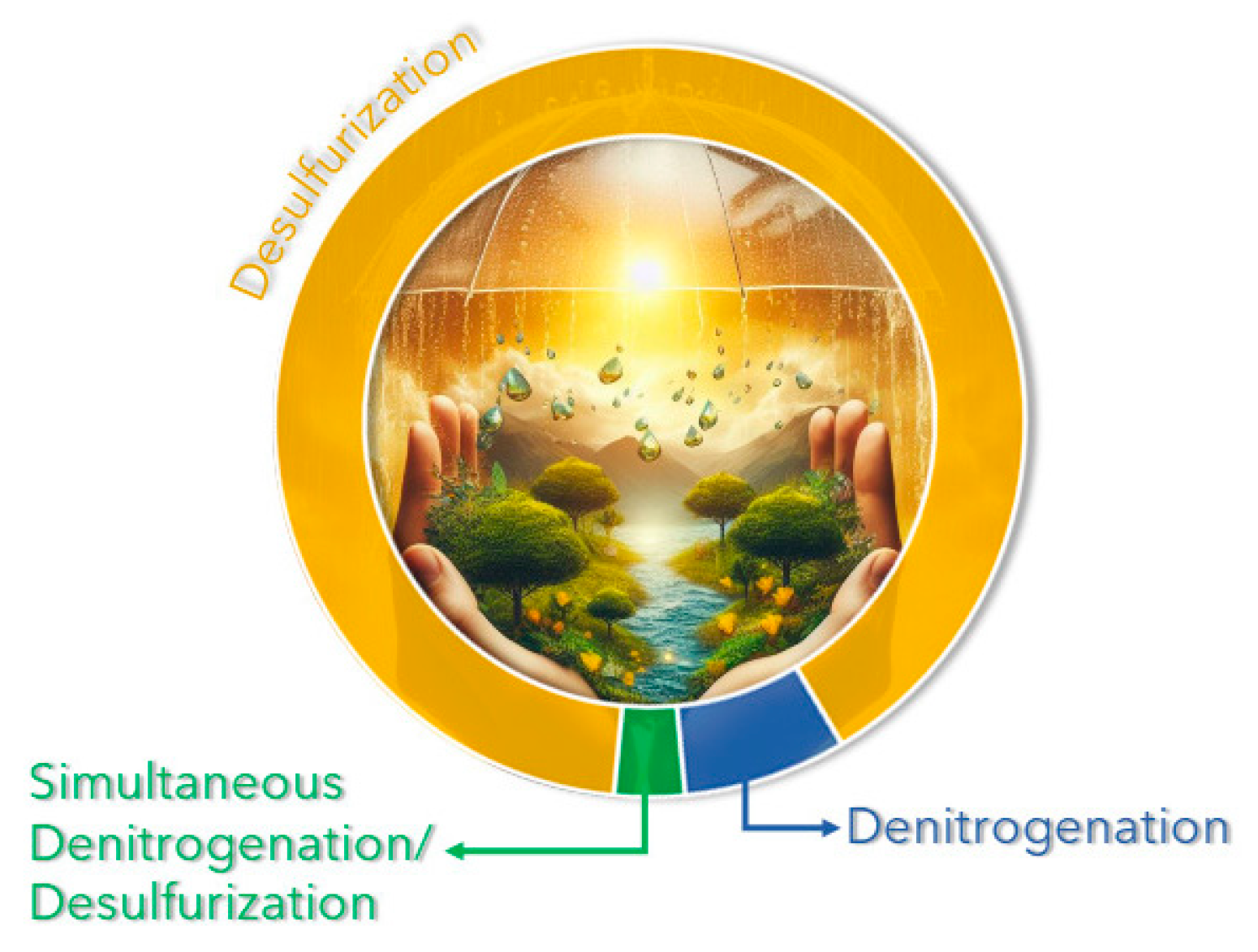
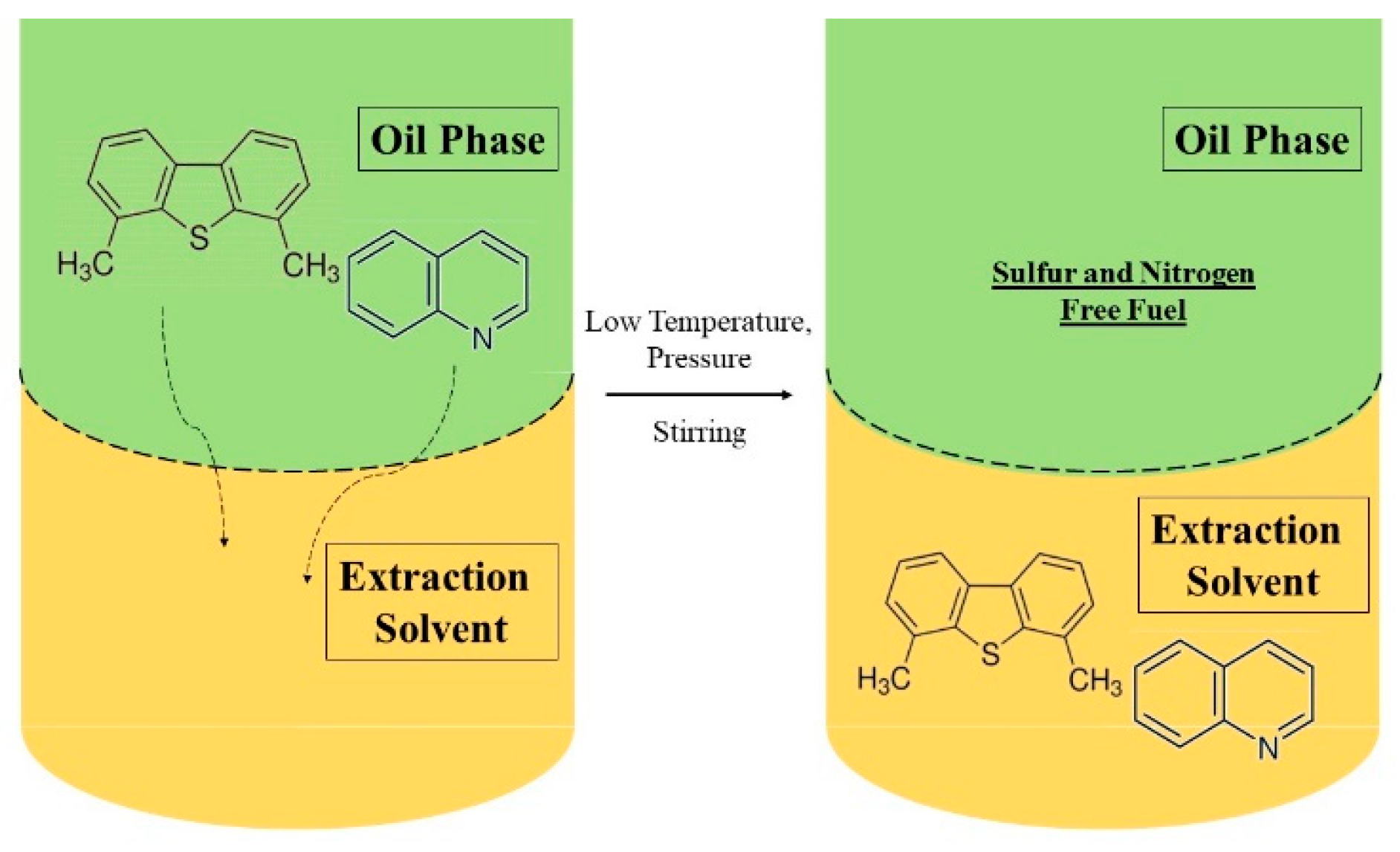
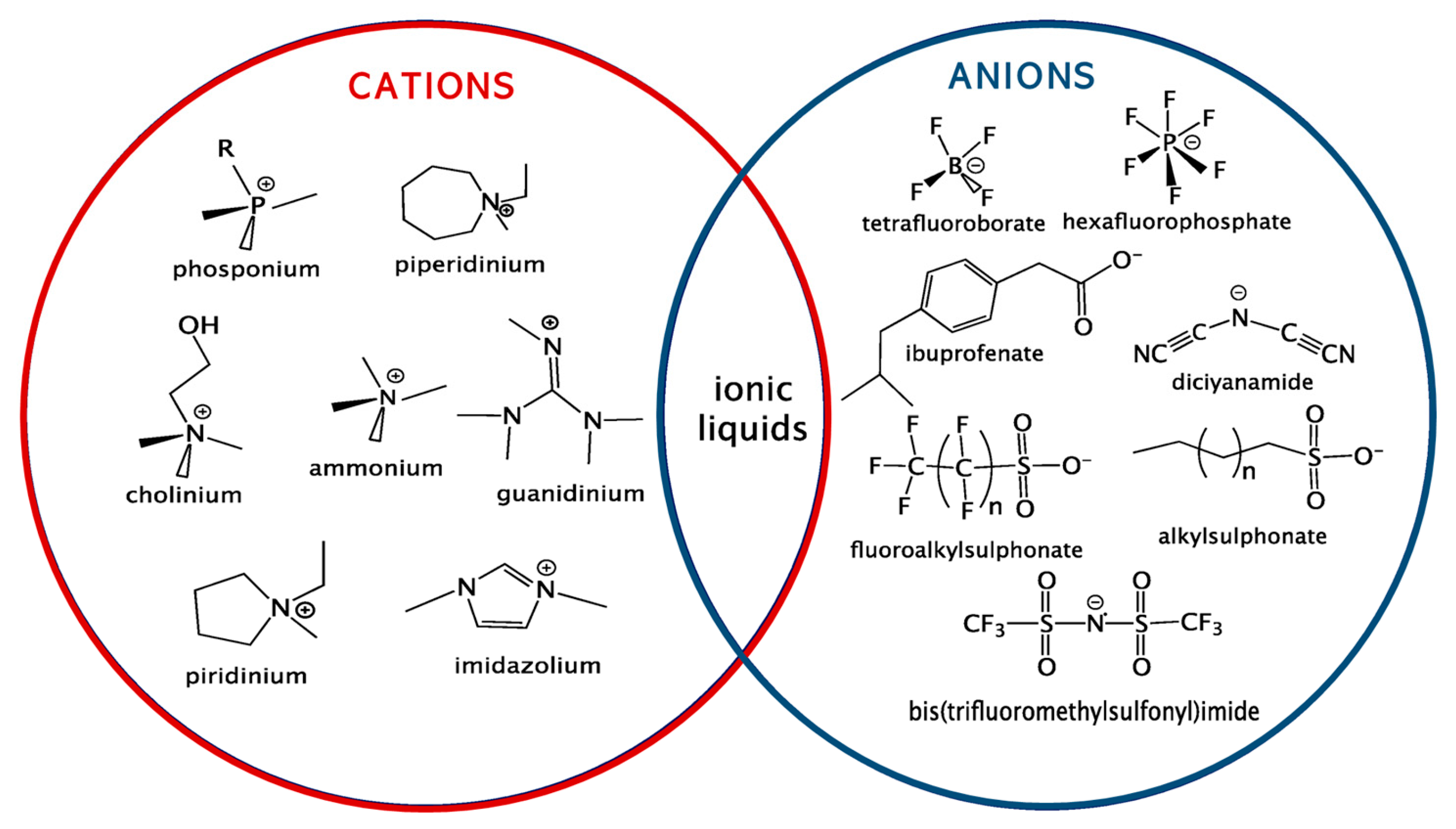
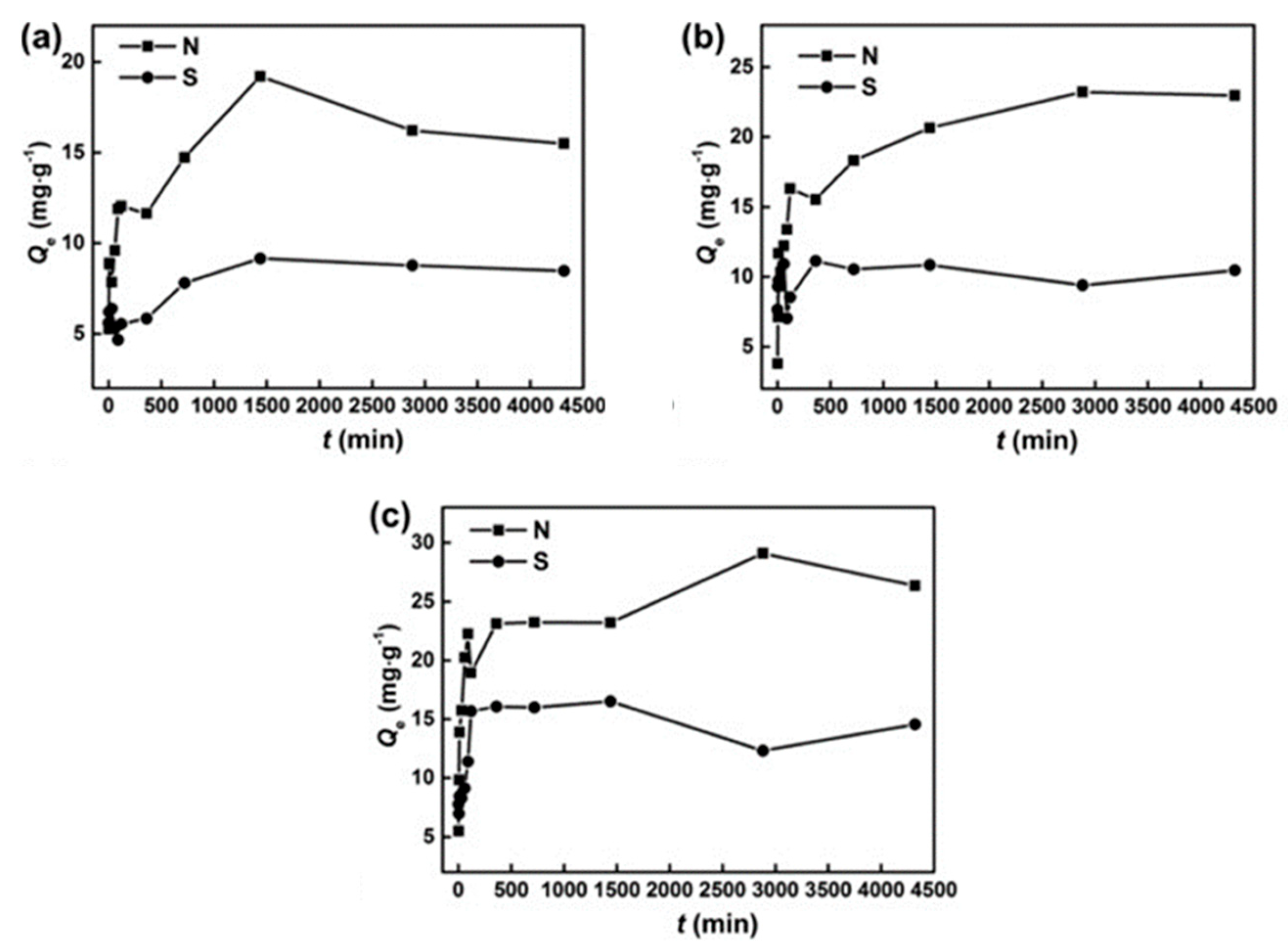
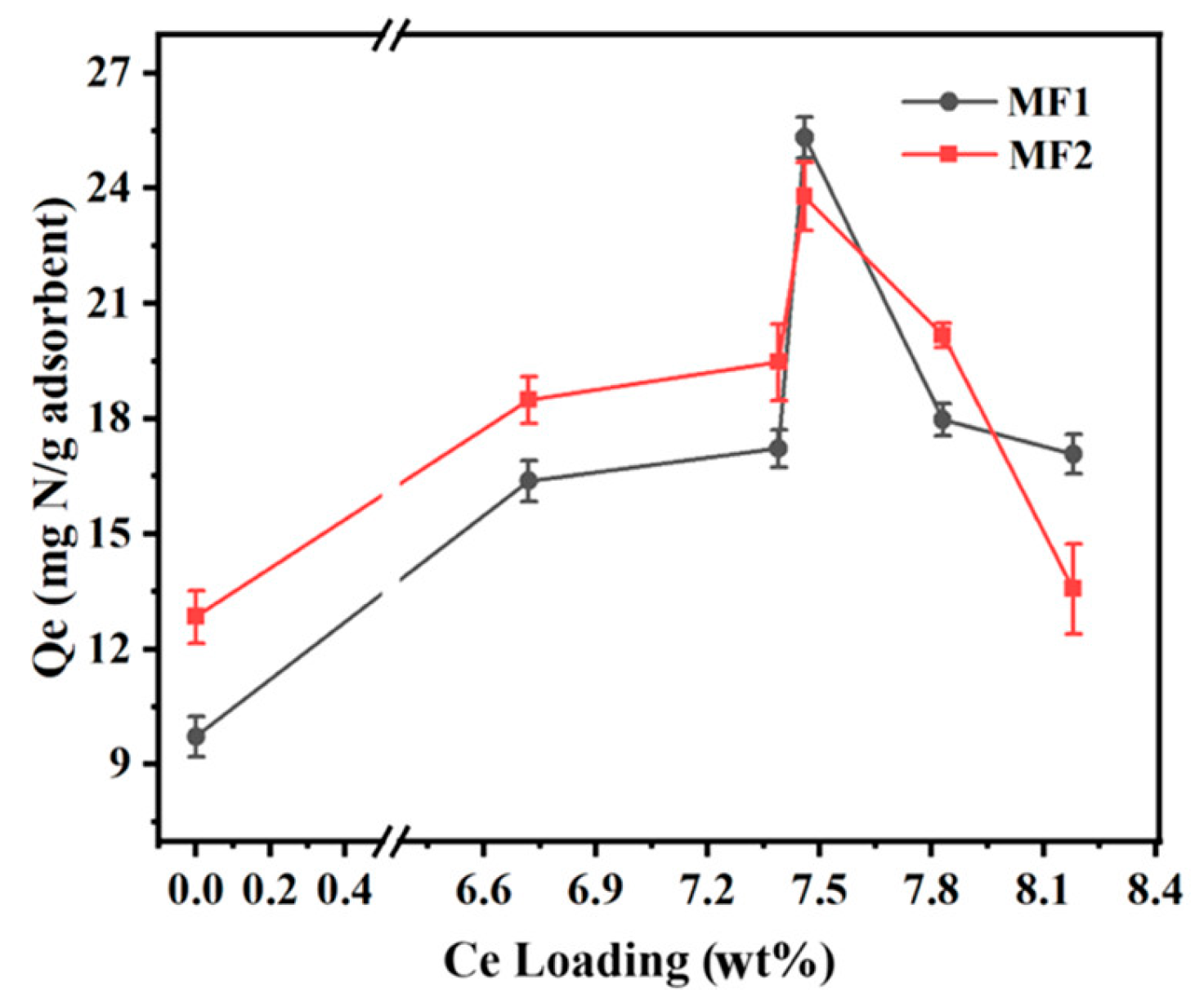
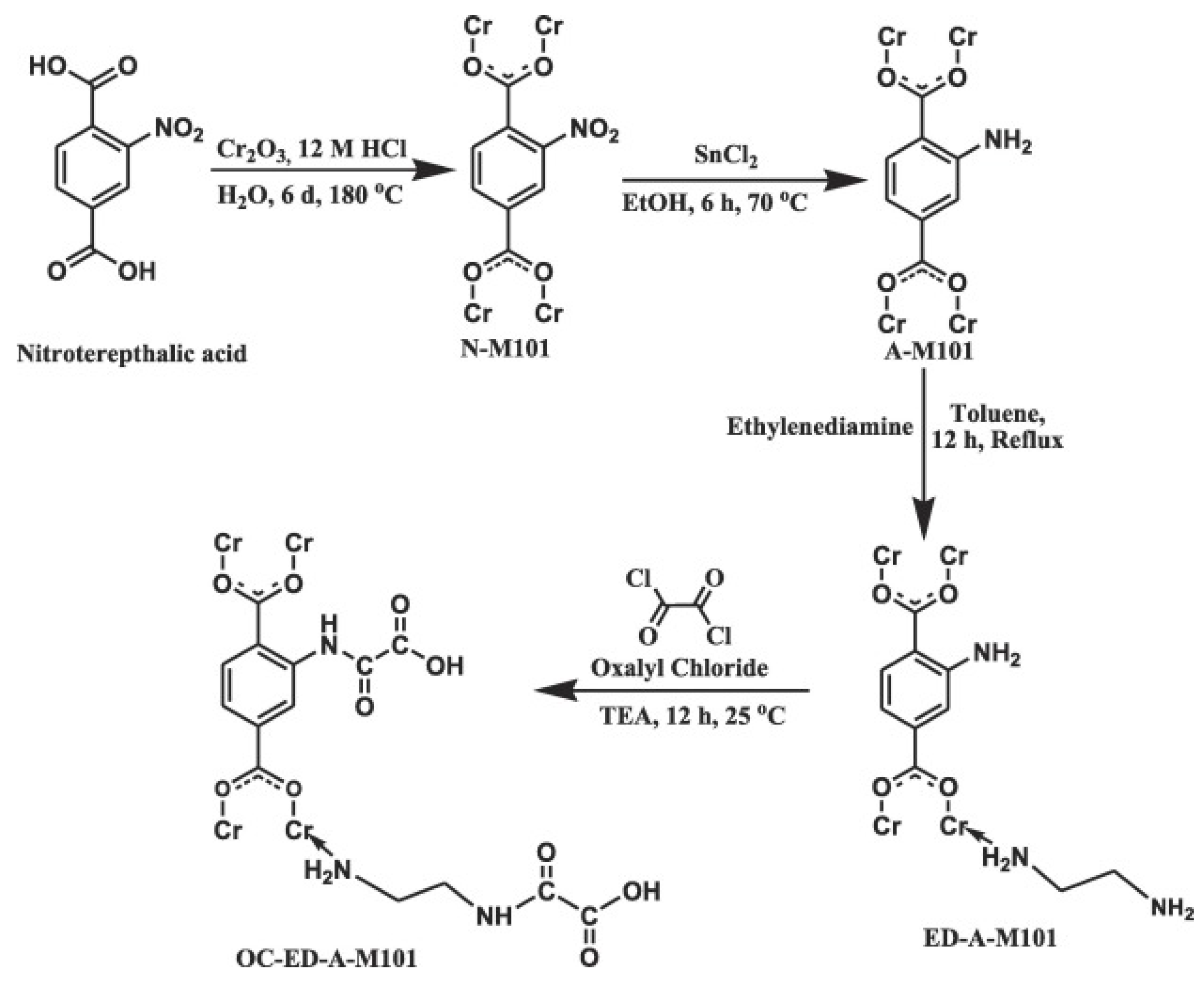
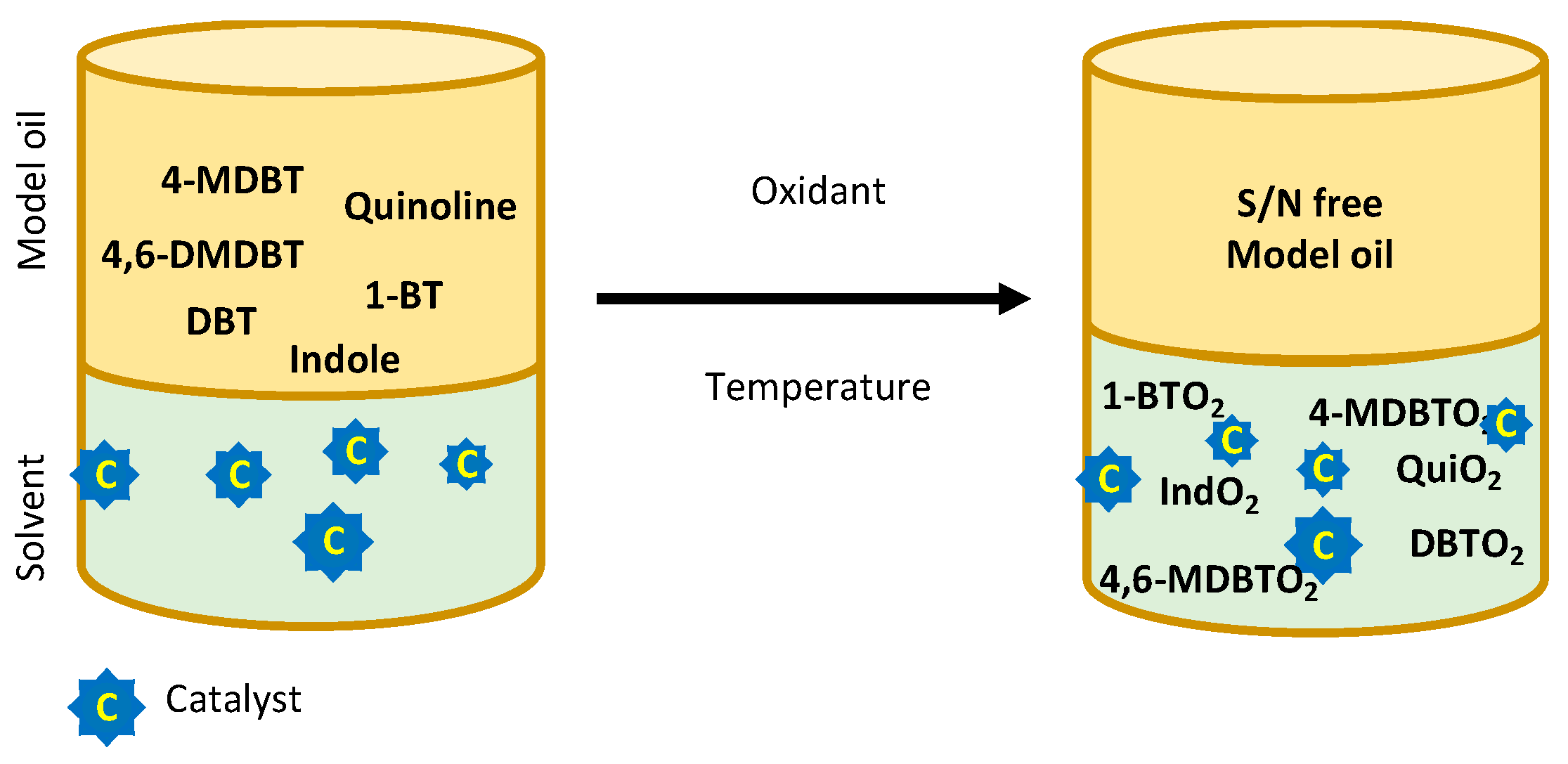
Disclaimer/Publisher’s Note: The statements, opinions and data contained in all publications are solely those of the individual author(s) and contributor(s) and not of MDPI and/or the editor(s). MDPI and/or the editor(s) disclaim responsibility for any injury to people or property resulting from any ideas, methods, instructions or products referred to in the content. |
© 2024 by the authors. Licensee MDPI, Basel, Switzerland. This article is an open access article distributed under the terms and conditions of the Creative Commons Attribution (CC BY) license (https://creativecommons.org/licenses/by/4.0/).
Share and Cite
Faria, R.G.; Silva, D.; Mirante, F.; Gago, S.; Cunha-Silva, L.; Balula, S.S. Advanced Technologies Conciliating Desulfurization and Denitrogenation to Prepare Clean Fuels. Catalysts 2024, 14, 137. https://doi.org/10.3390/catal14020137
Faria RG, Silva D, Mirante F, Gago S, Cunha-Silva L, Balula SS. Advanced Technologies Conciliating Desulfurization and Denitrogenation to Prepare Clean Fuels. Catalysts. 2024; 14(2):137. https://doi.org/10.3390/catal14020137
Chicago/Turabian StyleFaria, Rui G., Dinis Silva, Fátima Mirante, Sandra Gago, Luís Cunha-Silva, and Salete S. Balula. 2024. "Advanced Technologies Conciliating Desulfurization and Denitrogenation to Prepare Clean Fuels" Catalysts 14, no. 2: 137. https://doi.org/10.3390/catal14020137
APA StyleFaria, R. G., Silva, D., Mirante, F., Gago, S., Cunha-Silva, L., & Balula, S. S. (2024). Advanced Technologies Conciliating Desulfurization and Denitrogenation to Prepare Clean Fuels. Catalysts, 14(2), 137. https://doi.org/10.3390/catal14020137










